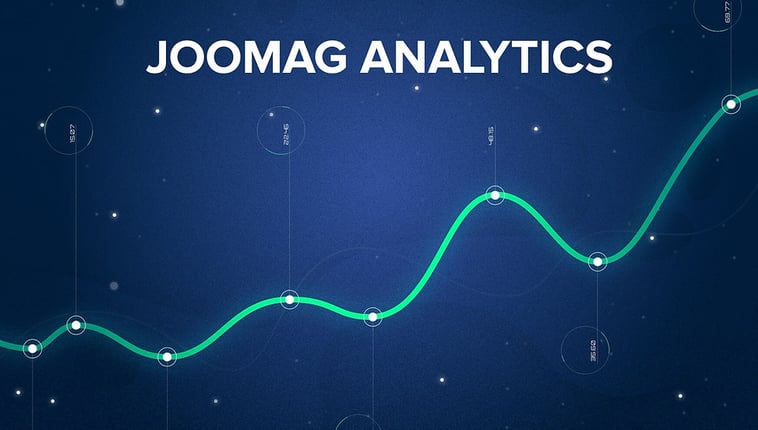
The Importance of Data-Driven Content Marketing
The greatest content in the world won’t be seen or appreciated by anyone if it isn’t data-driven. That’s why a phased and systematic approach to tracking is the best way to inform your content marketing strategy. Every initiative you invest in should incorporate effective measurement practices from start to finish. Why? Because your content, regardless of how amazing it is, could always be better.
Why Measurement is Key from Start to Finish
If there’s one thing that’s certain in the world of digital marketing, it’s change. To keep up with it, marketers must continually track, evaluate, and optimize their content. This principle lies at the heart of every sustainable growth campaign: Quality content should yield actionable insights.
The competition between publishers, marketers, and organizations is heating up. Who will come out on top?
We’re drowning in content. The Internet’s flooded with so much of it that it’s getting increasingly harder for brands to stand out. Recent changes in Facebook’s News Feed algorithm, for example, prioritize posts from friends and family instead of publishers and pages, says Adweek. Social media sites in general are managing way more content than they used to, and space is getting scarce (especially for marketers).
 Who will save us?
Who will save us?No one knows who “owns” content marketing anymore or ever will. Businesses laud their own creativity and connections to big-name brands/advertisers while publishers consistently earn loyal subscribers and have more control over the content creation and distribution processes.
Either way, it’s rough out there. And if you’re a publisher, marketer, or a business, you’re probably wondering how you can get a leg up on the competition. Here’s the trick: Stop trusting your gut and start relying on data instead.
Embracing Data to Elevate Your Content
Why Data Matters (a lot) For Your Content
The most successful publishers, marketers, and businesses are data-driven ones.
Data provides key insights into hidden correlations and patterns that are crucial for shaping business strategies. With tracking, you’ll make smarter business decisions, develop products faster, and allocate resources more efficiently. Without it, you’ll never know if your content strategy is working or not (or if you’re wasting your time and money).
In an eye-opening article featured in Towards Data Science, data science professionals concluded that businesses using analytics are 23x more likely to win customers, 6x as likely to keep those customers, and 19x more likely to reach profitability as a result.
The right data opens the door to consistent and quality content. Anyone can create content, but not everyone can create content that’s relevant, timely, engaging and valuable. Tracking analytics are indispensable in this regard; they can drive traffic that’s as high-quality and consistent as the content they inform. Moreover, data is a great tool for increasing brand awareness and building trust with consumers.
Data as a concept is inherently informative, but its most defining characteristic is its ability to provide answers to fundamental marketing questions like these:
-
Is my content marketing strategy actually working?
-
Is it producing a positive ROI for my business?
-
What areas could be improved on?
-
Which SEO and keyword trends can better inform my content strategy?
-
Which kinds of content drive the most traffic, or convert more leads into paying customers?
-
Are my strategies improving over time?
The more data you collect — and the more questions it answers for you— the better off your strategy will be. The key for any organization, however, is to distill critical information gleaned from marketing and/or customer data into meaningful metrics that underpin smart business decisions, boost efficiency, and lend themselves to a customer-centric marketing strategy. All-in-one digital publishing platforms like Joomag can help.
Years in the making, Joomag's revamped analytics have finally arrived
We’re data friends over here at Joomag, and we’re always leveraging it to improve our products and services. That same logic also applies to the content we and our customers create.
But over time, we began to realize that tracking just wasn’t where it needed to be. The potential was there, but data was getting bigger and harder to manage. For publishers, the biggest obstacle to unlocking the true value of analytics was condensing and translating it all into straightforward, digestible pieces. And so we did.
Audience, Content, Behavior, and Acquisition: The Pillars of Joomag Analytics
Our completely new and improved analytics infrastructure now includes four core sections: Audience, Content, Behavior, and Acquisition. Here’s an in-depth look at each one.
1. Audience data provides a comprehensive view of your readership. It tells you the total amount of readers who viewed your publication, the average time they spent on it, and pageviews. Filter results by specific publications, days, weeks, or months.
The geo map assigns various colors and values to certain regions. These colors represent specific concentrations of readers living in different countries. Countries with darker shades of blue have more readers living in them. You can click on a color-coded country to reveal even more information about it. You can also view a world map or a country-specific one. The choice is yours
2. Content data ranks and lists the publications you've created by popularity. Each row lists a publication while the columns contain detailed information about that publication's unique readership activity. If you’re having trouble understanding something on the screen, don’t forget to click on the helpful tooltips next to each category.
3. Behavior data shows you how readers are interacting with your publication. Numerical values and percentages are displayed on this screen.
-
Reading Progress: now you’ll know how many people started, haven’t started, and finished reading your publication (includes average time of completion and average completion rates).
-
Video and Audio performance: video and audio content embedded in your publication can be tracked. Trackable information includes Total Plays, Unique Plays, Average Play Time, Total Play Time, Length, and Average Completion Rate.
-
Retention table: lists certain dates and the number of people who viewed your publication on those dates. Also includes detailed information on how many readers were retained after a specific amount of time (days, weeks, months) had passed
4. Acquisition data breaks down the performance of different sources that send traffic to your publication, relaying critical information from direct, campaign, referral, organic search, and other sources back to you. The Social metric includes traffic information pulled from social media sites like Facebook, Twitter, and LinkedIn. The Referrals metric captures traffic that's registered when a reader lands on your publication from another website (usually after clicking on a hyperlink). The Organic Search metric provides key insights into the various search engines that send traffic to your publication..
The content you create matters. But the data you pull from it does, too. We’ll help you do both.
Create stellar content and track it all with Joomag.
FAQ
Q: How do Joomag's new analytics improve upon previous versions?
A: The new analytics offer a more detailed breakdown of reader engagement, including how they interact with content and what drives traffic to your publication.
Q: Can Joomag's analytics help identify the most engaging content for my audience?
A: Yes, by providing insights into reading behavior and content performance, enabling publishers to tailor their content strategy based on what resonates most with their audience.
Q: How does the acquisition data provided by Joomag help in refining marketing strategies?
A: Acquisition data helps publishers understand the sources of their traffic, allowing for more targeted marketing efforts and better allocation of resources.


